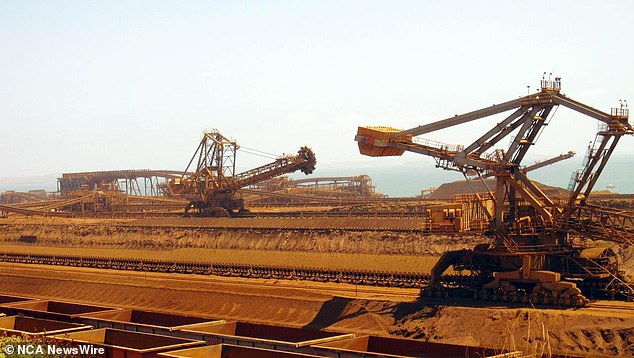Why Jim Chalmers can’t stop smiling about his Budget update because of an ‘invisible’ cost YOU are getting stung with – and it’s not interest rates
Labor is on the verge of achieving its first consecutive budget surpluses since the late 1980s, thanks to the abolition of the tax credit during a cost-of-living crisis.
Treasurer Jim Chalmers has revealed that the federal budget deficit forecast for this budget year has been reduced to just $1.1 billion.
“We are not predicting a second surplus yet, but we are within striking distance of one,” he said.
“We've given ourselves a chance, but we're not there yet and we've been consciously cautious and consciously conservative.”
The Treasury Department's Mid-Year Economic and Fiscal Outlook update released on Wednesday revealed a staggering $12.8 billion improvement for the 2023-2024 period compared to the May budget.
Should revenues improve, Labor could increase its $22.1 billion surplus for 2022-23, the first in 15 years and the first since 1989 for a federal Labor government.
A second consecutive surplus is a feat Labor has not achieved since Paul Keating was Treasurer and Bob Hawke Prime Minister.
But Dr. Chalmers was chief of staff to former Labor treasurer Wayne Swan in 2012 when he was forced to abandon his promise of a budget surplus following a fall in tax revenues during Julia Gillard's troubled premiership.
The incumbent treasurer, who like his former boss is also from Queensland, is determined to avoid this political mistake.
'We have recently seen through our predecessors what happens when you promise too much and deliver too little. “We are committed to doing this differently,” he said.
“Cautionary and conservative when it comes to sales increases due to the uncertainty and volatility in the global economy as well as in our own domestic economy.”
Treasurer Jim Chalmers has revealed that the federal budget deficit forecast for this budget year has been reduced to just $1.1 billion. A second consecutive surplus would make him the first Labor treasurer since Paul Keating in the late 1980s to achieve the feat.
Labor's first potential consecutive budget surpluses since the late 1980s would coincide with Prime Minister Anthony Albanese's decision to end the previous government's low- and middle-income tax offset, which provided relief of up to $1,500 for those who earned $48,000 to $90,000.
In an effort to alleviate inflationary pressures, the treasurer will rake in huge revenue windfalls instead of spending them.
In May, Dr. predicted. Chalmers has a deficit of $13.9 billion for this financial year.
But the razor-thin deficit will likely put more pressure on Treasurer Jim Chalmers to provide additional cost-of-living relief in the next budget, scheduled for May 2023.
In recent weeks, the Treasurer has fielded demands from aggrieved government constituents and community organizations for more support as households suffer from high inflation and rising interest rates.
Government tax collections are skyrocketing
Total revenues were $17.1 billion higher than expected in the May budget, exceeding increases in government spending that rose by $4.3 billion.
Income taxes have been revised upward by nearly $9 billion this fiscal year to above $360 billion as a combination of low unemployment and wage growth, which pushes workers into higher tax brackets, adds to government revenues.
Meanwhile, tax revenues from mining and other non-mining companies rose to a record $137.9 billion, supported by rising prices for key raw materials including iron ore, coal and gas.
The Ministry of Finance has advanced its forecast that iron ore will reach a value of $60 per tonne in the September 2024 quarter. In the May budget, officials had expected prices for the commodity to fall to this level in March.

Rising prices for raw materials such as iron ore have increased taxation on companies. Photo: AFP / Amy Coopes
However, iron ore prices have risen in recent months to $135 per tonne – more than double forecasts – raising questions about whether the revised forecasts will be accurate.
Federal and state finance officials have a track record of underestimating commodity prices during boom periods, allowing governments to benefit from higher-than-expected prices.
According to the budget update, tax revenues as a share of the economy will reach 23.7 percent this fiscal year, the highest level since 2008.
The mid-year update also states that 92 percent of revenue increases will be booked over the four-year forecast period.
However, this Treasury estimate does not take into account the $13.2 billion spent on the 15 percent pay increase awarded to aged care workers and other off-budget funds worth nearly $50 billion.
Despite the huge revenue windfalls, budget deficits are projected to persist, peaking at $35.1 billion in 2025-2026 before falling to $19.5 billion in 2026-2027.
